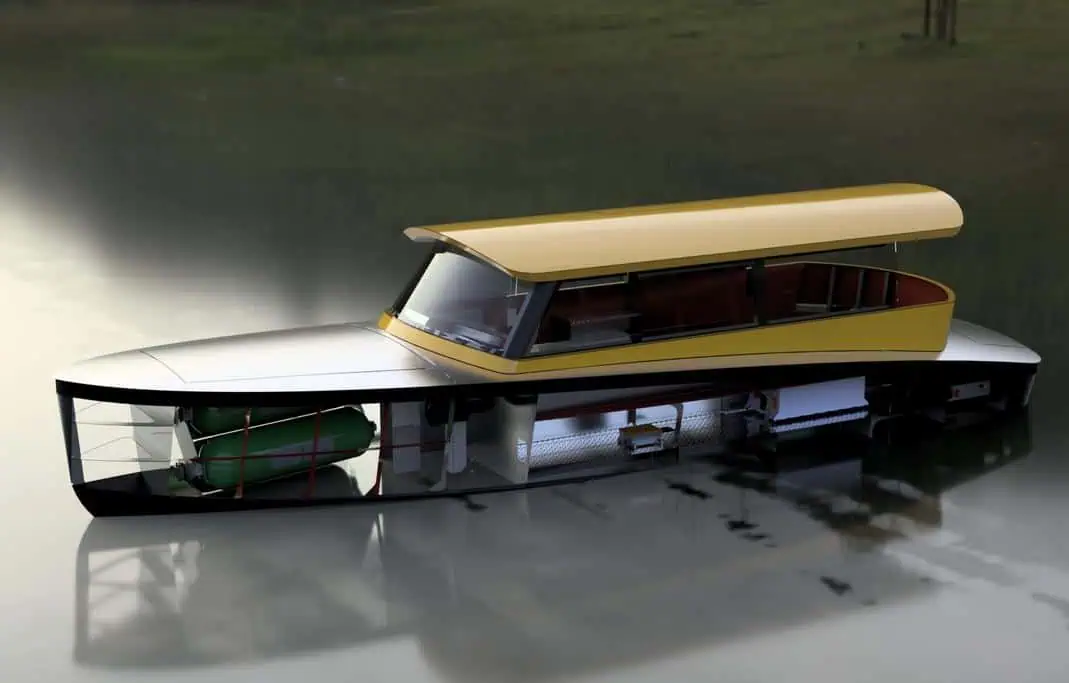Hydrogen as an energy carrier can play a major role in the energy transition. However, its commercial application is still in the start-up phase. The investment costs of the drive system are still so high that profitable operation is not feasible. And then there is also the chicken-or-egg problem for the tank infrastructure: as long as there are no hydrogen vessels, the tank infrastructure will remain limited and vice versa. Alumax Boats is now tackling this problem. This is where the first hydrogen water taxi is being built for Watertaxi Rotterdam. In this aluminum water taxi, hydrogen is used to generate electricity to power the boat, making the range comparable to that of a diesel-powered ship.
The hydrogen Watertaxi Rotterdam is being developed by the SWIM consortium, with financial support from the Municipality of Rotterdam, the Ministry of Infrastructure, the Gieskes-Strijdbis fund and Innovation Quarter.
The SWIM consortium consists of Flying Fish, Zepp.solutions, Enviu and Watertaxi Rotterdam. In this collaboration, Zepp.solutions is responsible for the maritime hydrogen system, Watertaxi Rotterdam is responsible for the exploitation of the hydrogen Watertaxi and Enviu is the initiator, project leader and venture builder. Flying Fish has developed the innovative E-Drive system. The SWIM consortium has developed this innovative hydrogen-electric powertrain to accelerate the energy transition on water and give customers the opportunity to switch to a sustainable fuel without making operational concessions.
At the Alumax Boats yard, Alumax technicians are currently working closely with Flying Fish engineers.
For this E-drive, Flying Fish and their team of engineers have developed and built the high voltage distribution and safety system that distributes the power between the fuel cell system, the high voltage battery, the AC/DC charger, the DC/DC converter and the motor. In addition, the temperature management system, which cools all high-voltage components, was built by the people of Delft. But the low-voltage power and control system, including the Vessel Control Unit (VCU), the electrical switchboard and the power distribution to the powertrain components, was also designed by Flying Fish.
The next phase of construction will be the incorporation of the hydrogen fuel cell system. The maritime hydrogen system, developed by zepp.solutions, is a 45 kW all-in-1 module that contains all components necessary to generate electrical energy from hydrogen. In addition to the development and production of this module, zepp.solutions is also responsible for hydrogen storage. Divided over several tanks, the ship will soon be able to carry 14 kg of hydrogen, enough to sail around Rotterdam for a full day (about 9 hours).












